THE GREATEST BOATS EVER





YEAR’S BEST RESTORATIONS









RIVA CENTENARY






FIFE MASTERPIECE SAVED FROM SCRAP

RACING A BIG SCHOONER




















THE GREATEST BOATS EVER





YEAR’S BEST RESTORATIONS









RIVA CENTENARY






FIFE MASTERPIECE SAVED FROM SCRAP

RACING A BIG SCHOONER



















CHELSEA MAGAZINES
Jubilee House, 2 Jubilee Place London SW3 3TQ
EDITORIAL
Editor Rob Peake rob.peake@classicboat.co.uk
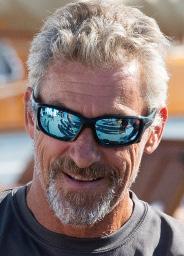

Senior Art Editor Peter Smith
ADVERTISING
Head of Marine Market

Jodie Green +44 (0)20 7349 3722 jodie.green@chelseamagazines.com
Advertising Manager Andrew Mackenzie +44 (0)20 7349 3722 andrew.mackenzie@chelseamagazines.com
Advertisement production
Allpointsmedia +44 (0)1202 472781 allpointsmedia.co.uk
Published by The Chelsea Magazine Company Ltd




Managing Director James Dobson
Commercial Director Vicki Gavin
Publisher Simon Temlett Group Sales Director Catherine Chapman
© The Chelsea Magazine Company Ltd 2023.

All Rights Reserved. ISSN 2753-1252
No part of this magazine may be reproduced without permission in writing. Every care is taken to ensure the accuracy of information in The Yachting Year, but no responsibility can be accepted for the consequences of actions based on the advice portrayed herein. The Chelsea Magazine Company Ltd makes every e ort to ensure that the advertising contained in this magazine is delivered from responsible sources. We cannot, however, accept any responsibility for transactions between readers and advertisers.
For the Chelsea Magazine Company Ltd full set of terms and conditions please go to chelseamagazines.com/terms-and-conditions
Welcome to the 2023 edition of Classic Yachts, our annual collection of the year’s best stories from the global classic scene – a scene that, as we go to press, has received a rather high class shot in the arm in the form of the inaugural Richard Mille Cup. is lavish event saw some of the biggest and most famous classic yachts take part in a series of races eastwards up the English Channel, starting in England and nishing in France. e watchmaker Richard Mille himself is behind the event, a er his purchase of Moonbeam IV (1920) last year, with a team of fellow enthusiasts that includes friend Benoit Couturier who owns Mariquita (1911). Together they have set up a new base in Brest, with sailors being trained on site and more events planned.
It’s a signi cant development at the very top end of this constantly evolving scene and one that will only bene t the wider classic world. e great ‘revival’ that our sister magazine Classic Boat championed in the late 1980s and 1990s, as a fresh appreciation of wooden boats spread around the world, continues to gather new proponents, patrons and admirers, who in turn drive boat ownership, restorations, regatta participation and keep wind in the sails of all the many parts of the classic boat industry in 2023. Our regatta photo diary, in this magazine, showcases the Richard Mille Cup and other leading events from the last year.
Meanwhile, it has been good to see a broadening of the ‘classic’ concept, with a new class created for breglass yachts in the Mediterranean regattas. is new class brings into the fold quite a small collection of boats – one-of-a-kind and prototype yachts launched between 1970 and 1984, in possession of an IOR certi cate obtained within that timeframe, and ‘in perfect state of conservation’.
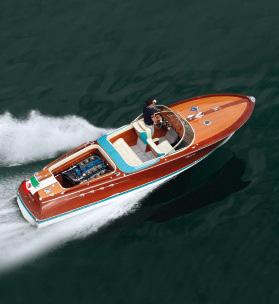

Classic Yachts is part of Chelsea Magazines’ marine portfolio, along with our monthly titles Classic Boat and Sailing Today with Yachts & Yachting, plus our annual Yachting Year
CIM (Comité International de la Méditerranée du Yachting Classique) intends the rule to be an extension of its current handicap rule, known for the weighting it gives to ‘authenticity’. What it won’t do is open the doors to all kinds of breglass yachts of that era, as the article on the nal page of this magazine makes clear.
www.chelseamagazines.com
Elsewhere in Classic Yachts, we tell the stories behind the greatest restorations of the past year, we meet some of the characters that make this classic world tick, we visit leading wooden boatyards and we o er advice on how to maintain your old classic yacht. I’m pretty sure, if you are reading this, that you’ve either got a classic boat or you’d like one – and for those in the latter category, have you seen our online classi eds? Always dangerous viewing.
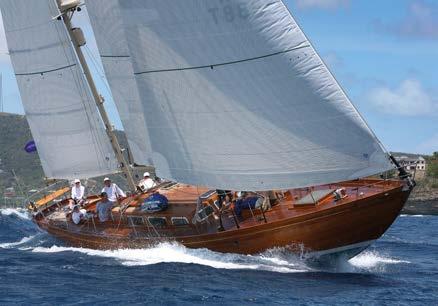
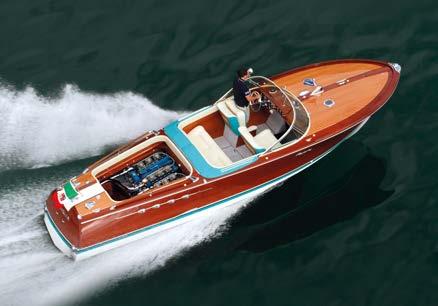
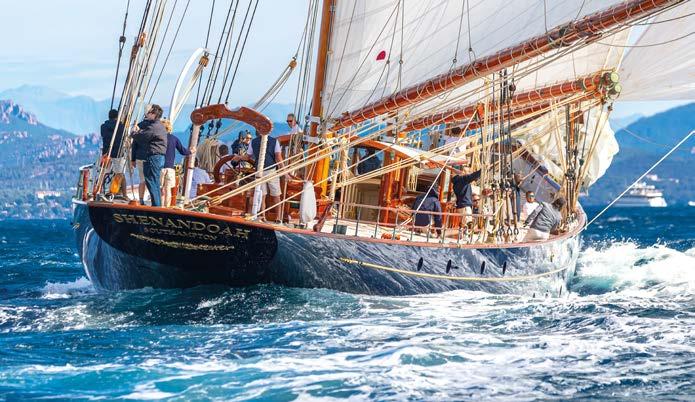




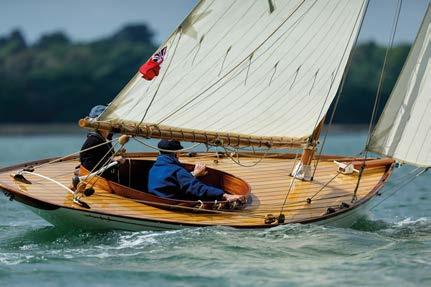








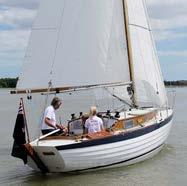

The 114ft staysail schooner Aschanti IV, built in 1954, is still in prime condition and covers hundreds of miles each season with a dedicated owner and highly experienced skipper, who believe it or not races her in Antigua Classic Yacht Regatta’s annual single-handed race. Down below she is lavish; on deck all is seamanlike. To race on Aschanti in Antigua’s big seas, as shown here, with her Henry Gruber lines thundering through the waves, is pure heaven.
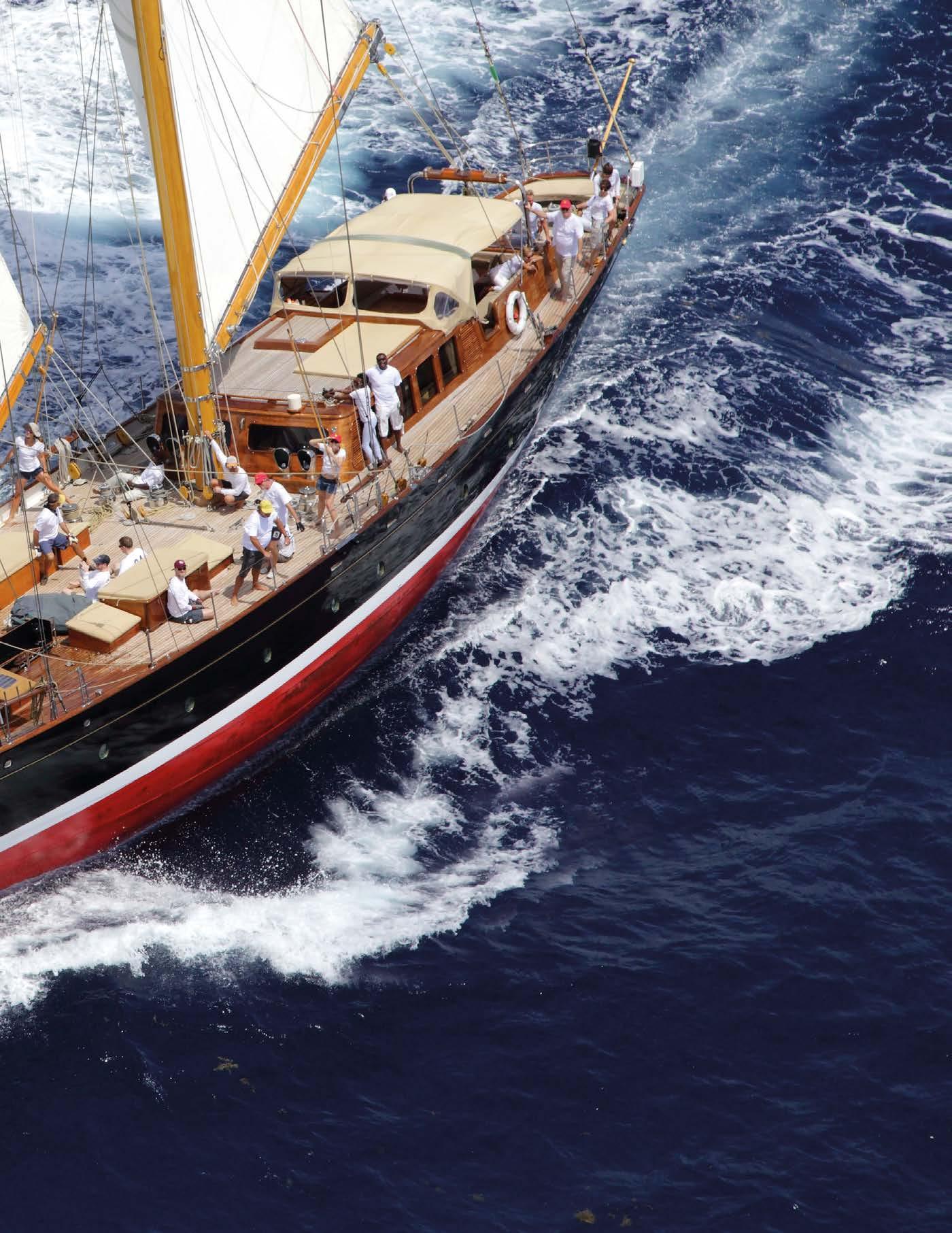
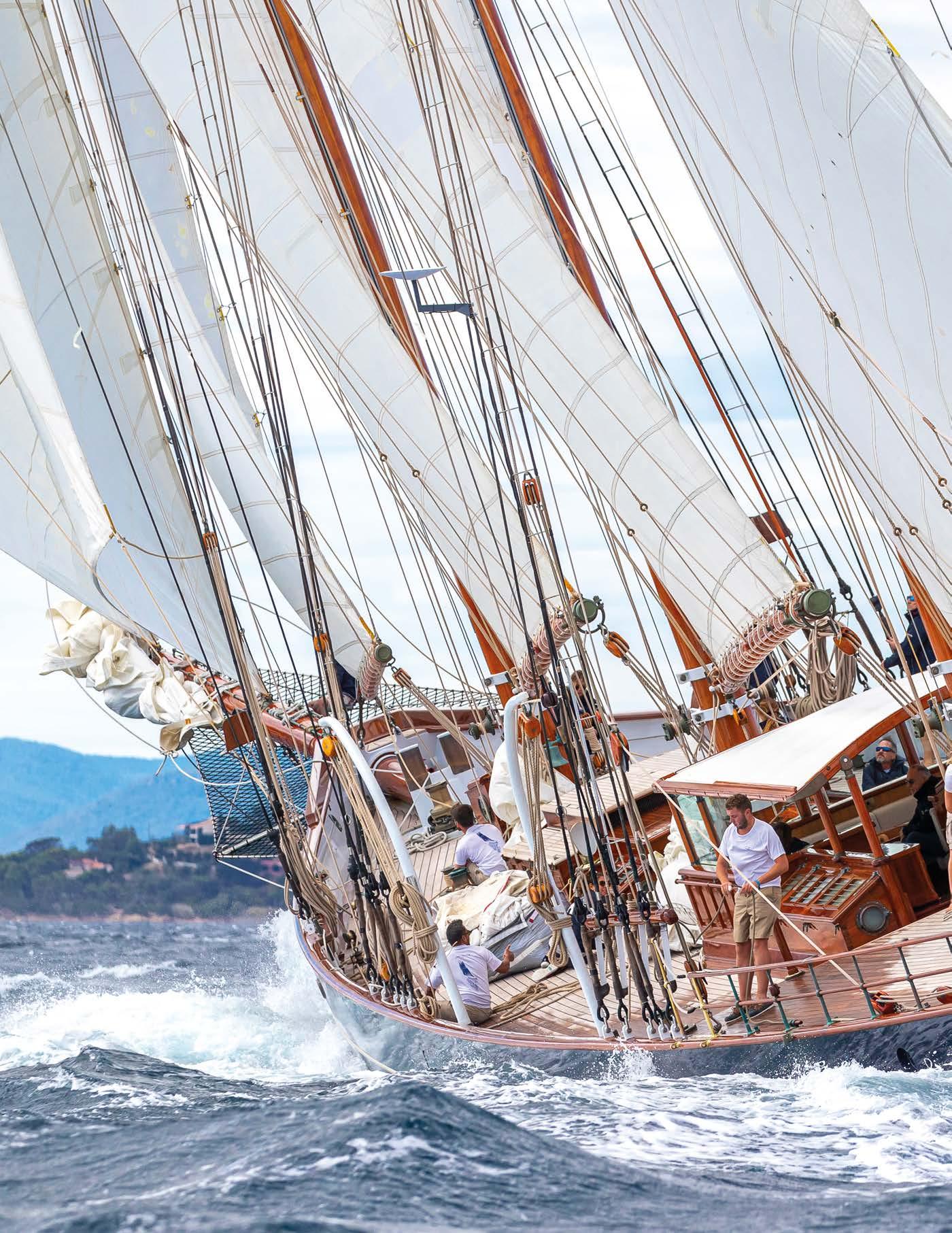
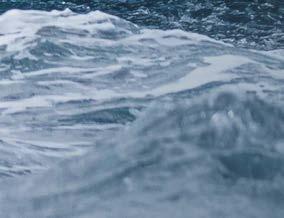


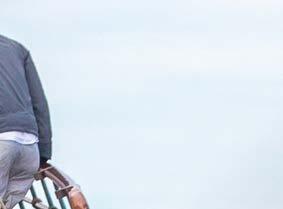
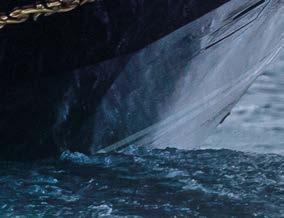




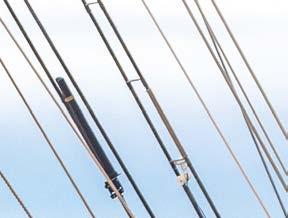



skipper of the threemasted topsail schooner

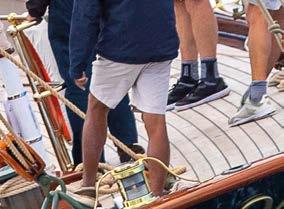





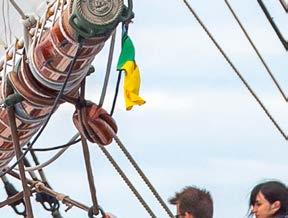




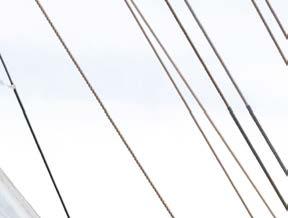
Shenandoah tells of racing her in high winds at Saint-Tropez


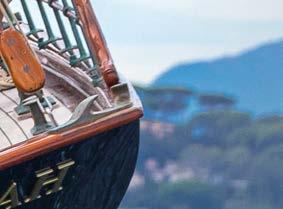


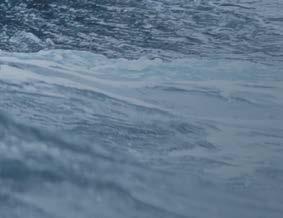




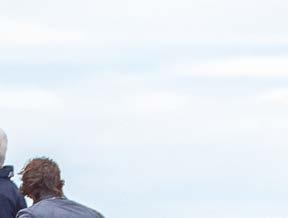



 WORDS RUSSELL POTTER PHOTOS GIANFRANCO FORZA
WORDS RUSSELL POTTER PHOTOS GIANFRANCO FORZA

The build up to the Voiles de Saint Tropez cannot be exaggerated. It’s the last event of the classic calendar and the end of the summer, so there’s quite often an emotional attachment to this regatta for a lot of sailors.
For us on Shenandoah the intention was to bring the boat to the south of France to showcase her on the circuit because, after a 22-year tenure, the owners are looking for the next custodian to look after her.
As is customary before Saint-Tropez, we took part in the Régates Royales in Cannes, with a couple of days training preceding it. It’s been a while since Shenandoah has graced the racecourse, so we spent a week removing all the charter toys, extra anchor, books and many spares that we carry for the ‘what if’ scenarios during the summer charter season. Alas, we had to take the Steinway piano on board for the racing as the thought of removing it... well, enough said!
As well as removing weight we also brought some sails out of deep storage and trained the crew to be able to push the boat to a competitive level against similar boats in her class.
Shenandoah was never intended as a race boat, but rather as a global cruising yacht. Nevertheless she turns heads when doing either. When we were given the green light to do the regattas, the crew was delighted and, for me, it was the first time I’d had the chance to dig out the spinnaker and assemble a race team.
Gathering a team for Shenandoah is a real delight as the people you get to choose from are very enthusiastic to be part of the programme. We ended up racing with a roster of six permanent crew, six seasonal and an additional 12 race crew. We were sailing with the bare minimum required to effectively race this boat. Three masts, 10 upwind sails with 1,000m2 (10,764 sqft) and
FACING PAGE: Charging downwind ready for the kite drop
three downwind sails that double that area should not be taken lightly and needs a lot of hands.
For us, Cannes was seen as a sort of training regatta, and due to the combination of windward/leeward courses and the light airs, the conditions were not ideal for the boat, but they were perfect to galvanise the team and get the manoeuvres smooth and speedy.
We arrived in Saint-Tropez on the Sunday, and with us safely stern-to and the crew soaking up the atmosphere of the town it felt fitting to pop up to the Sube, have a beer and admire all the beautiful classics parked up in such a spectacular setting. The Voiles is about the sailing but the après sail is also an important part of what gives this regatta such a unique identity amongst the competitors.
A Mistral bringing 50 knots plus of wind arrived on the Tuesday, which meant the first day of racing was abandoned. There was also another unfortunate call to abandon the following day, so racing for the Gstaad Centenary Cup, which is separate to the Rolex Trophy, took place the next day. Conditions were excellent and the race course first-rate for a quick pursuit out and back into the bay. The leeward mark rounding was the highlight of the race. Watching the breeze freshen to the point that those still flying their spinnakers were broaching and rounding up ahead of us was a great spectacle. Fortunately, it’s something we never have to contend with on Shenandoah: due to the sheer weight of the keel she behaves very well in gusty conditions. So, it was a handbreak turn around the leeward mark and a blast upwind to the finish, which put us mid-fleet, respectable considering the boat that won could fit inside the main saloon of Shenandoah, twice!
Shendandoah of Sark – or just Shenandoah – is a steel, threemasted topsail gaff schooner built for the American banker Charles Fahnestock in 1902, at the height of the new American wealth. She instantly became one of the most glamourous yachts in the world, racing the crème de la crème from her base at Newport, Rhode Island. From the very start, she was a yacht that cruised as well as raced, and this is a pattern that has continued. She lost her three topsails after the war, and cruised to and around the Med where she spent years cruising and entertaining royals and stars of entertainment and commerce. During her life, Shenandoah has crossed the Atlantic many times and ventured further, up the Amazon, Niger and Congo rivers. She has been owned by princes and counts, but in 1972, a new, more modern owner, took her over: Marcel Bich, famous for Biro ballpoints and disposable cigarette lighters. Bich was a great owner for the yacht, giving her back her original name –something he believed strong in. He restored her and remained her owner for 14 years, during which the yacht starred in Rod Stewart’s video for ‘What Am I Gonna Do’, and a photo shoot for Vogue. She was restored comprehensively under a later benevolent owner in the mid 90s, and attended the America’s Cup Jubilee on the Solent in 2001. The current owner has had her from around that time.


With the Gstaad behind us, we only had two qualifying races for the Rolex Trophy. For the first race, in light airs we set off toward the pin end maintaining clear air and managed to keep away from the other yachts. As we progressed the wind slowly veered, lifting us up and over the lay line of the first mark. By the time we were within 500m of the mark we started cracking sheets and preparing for a gybe set. Everything was working out nicely. With the mark rounded and gybe set complete, we powered up and headed back home with a breeze filling in from astern. We had good company all the way down with Belle Aventure keeping us on our toes all the way to the finish line. We finished second to Viveka on corrected time in that race.
The start for the final race was downwind at around 20-25 knots so there was a little hesitation whether or not to use the kite. After the start it was La Sèche à l’Huile to port and then on to a mark off Saint- Aygulf before returning back to Saint-Tropez for the finish.
We started as far as we could downwind toward the pin end because we could see those ahead struggling to make La Sèche without gybing. This did mean that as soon the starting gun went, we got rolled by Naema, who had made the right choice to hoist her spinnaker and gollywobbler. With Ashanti and Puritan behind us and the wind looking light ahead, we made the call for the kite and up it went with us narrowly avoiding the wind shadow of Ashanti which was catching us.
Now with the kite up and the wind fading from 20 to 12 knots, it was a real effort to balance the boat speed with keeping the kite flying and heading up, thereby avoiding two gybes before La Sèche. With Shenandoah’s 4.8m draft, it was going to be close but we had to make it, even if that meant shooting the shallow spot. As we came abeam of La Sèche it was some relief as the boat speed was down to 6 knots and we were almost running by the lee, but we’d made it past.
The focus was now on Viveka who was only 500m or so ahead of us but closer to the shoreline. Certainly, if we could keep her from growing her lead, we could be well in with a chance, but no sonner than as I was thinking about that, a breeze line crept in from the shore and she was carried away with it. There was nothing we could do. We helplessly watched her sail away and, unfortunately, we were just outside the wind line, which seemed to take an eternity to reach us. By the time it did, she must have doubled the ground between us, but now we had the wind, we were back up to sailing at over 10 knots and things were looking up. Then, as Viveka
BELOW: threading through the oncoming fleet on starboard tack
FACING PAGE, CLOCKWISE FROM TOP: main saloon; cockpit; dining table; nav station; flag locker; master cabin spare bunk; deck saloon
approached Les Issambres, the wind started to veer and she sailed into a big shadow, slowing almost to a standstill and visually sat upright.
By this time we had other things on our radar. The fleet ahead was now heading back toward us, close hauled and on starboard. With us sailing downwind on port and the kite up, the breeze now around 20 knots true, we had the delicate challenge to try to thread our way through the oncoming traffic.
It must have been a little daunting to see Shenandoah carving her way through, but in the true spirit of gentlemanly classic racing (or perhaps sheer fear) we managed to safely find a path through. As soon as we were clear we could see the next breeze line filling in from the port quarter and the following call was to drop the kite. Just in time as well, because as the kite was folding under the shadow of the foresail, the breeze was now up to 25 knots and building. With the spinnaker safely in her bag and stowed midships, we were now getting headed into the leeward mark. The wind had come around more to the west and we were on a beam reach, Shenandoah in her element. Viveka was still to windward of us struggling with the gusty conditions, sailing lower in an effort to drop the kite, so we headed up and passed astern of them, giving them a great wind shadow to assist with getting their kite down.
With the entire set of fore-and-aft sails hoisted, we were pushing 14 knots coming up to the mark and watching Naema overpowered ahead gybing around the mark. The return leg back into the bay of Saint Tropez was going to be a little closer on the breeze so we readied the fore and main topsails for drop and hold because the conditions were growing livelier by the minute. Just as we approached the mark and flicked a 180, the topsails came down in record time and we started the next challenge to claw back the lead from Naema who was around 700m ahead of us. So far, we could not have asked for better conditions. We’d sailed downwind without making a gybe and then gybed from reach to reach at the leeward mark. As we sailed closer into the bay, we could also see Elena being taken down to leeward with strong gusts now pulsating down the bay of Saint-Tropez. She was trucking along and an impressive sight to see, but we could still see her so we knew that we’d probably beat her on corrected time. We were now watching down the race track and seeing the story unfold. The wind was still building and being offshore it was very gusty. Naema by this time was heeled right over and being pushed down to leeward of us. Our cap rail was almost constantly in the water and the jib trimmers looked like whitewater rafters from time
